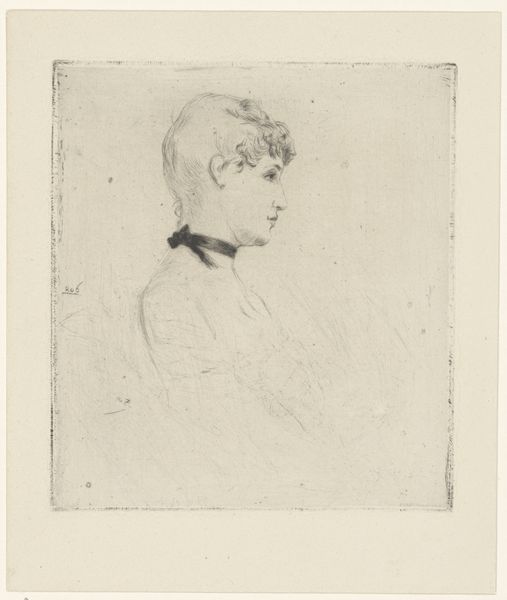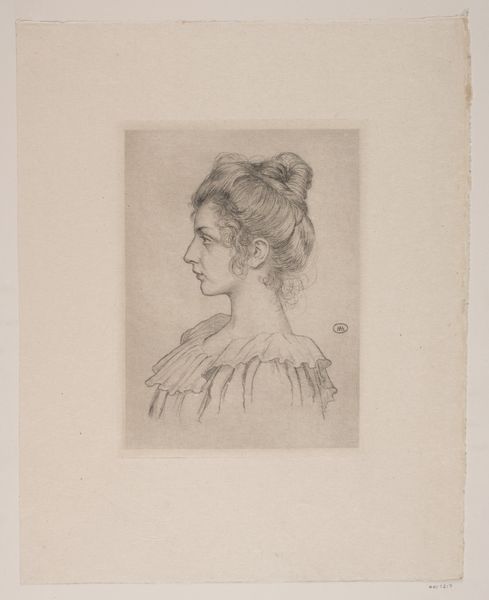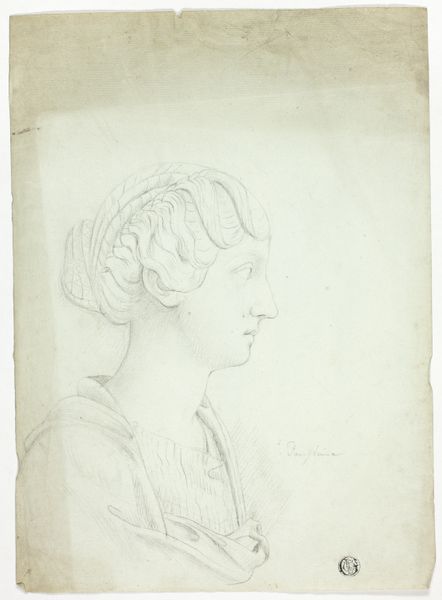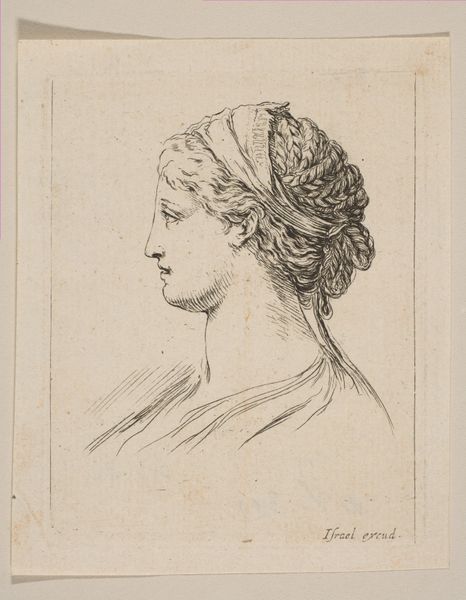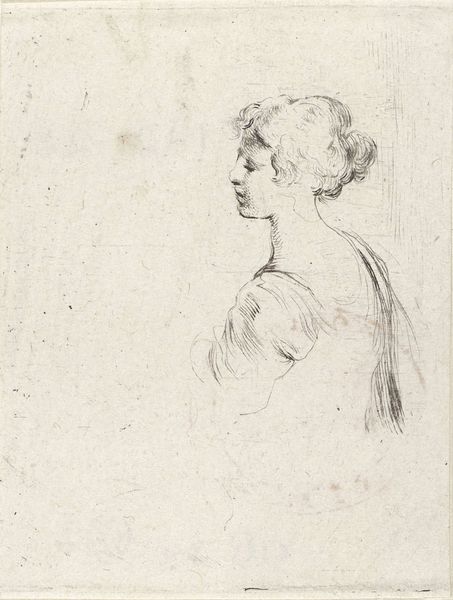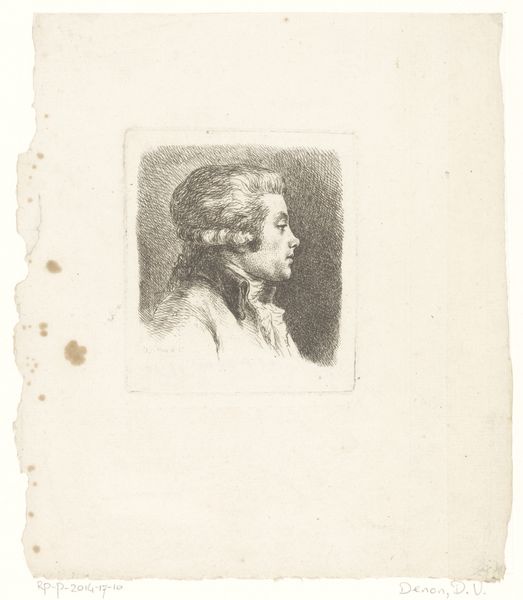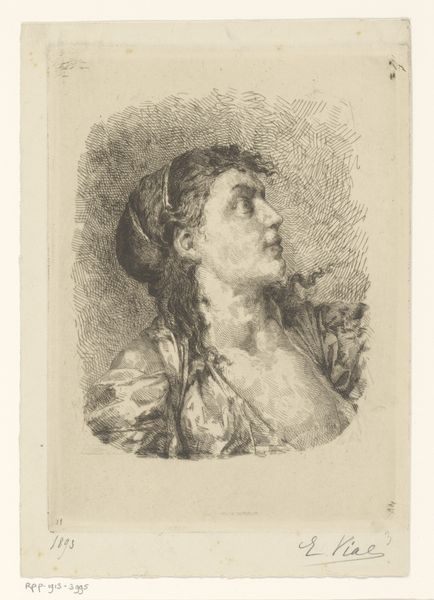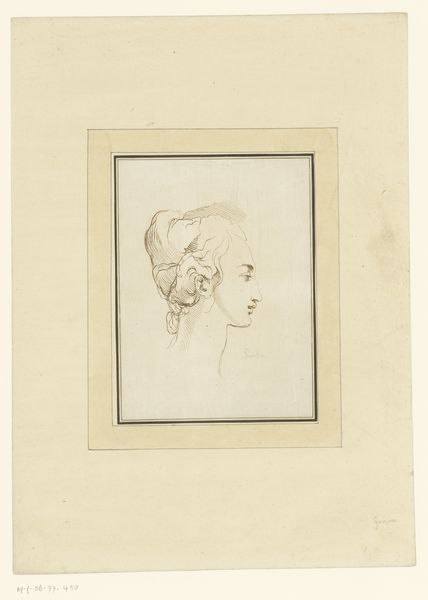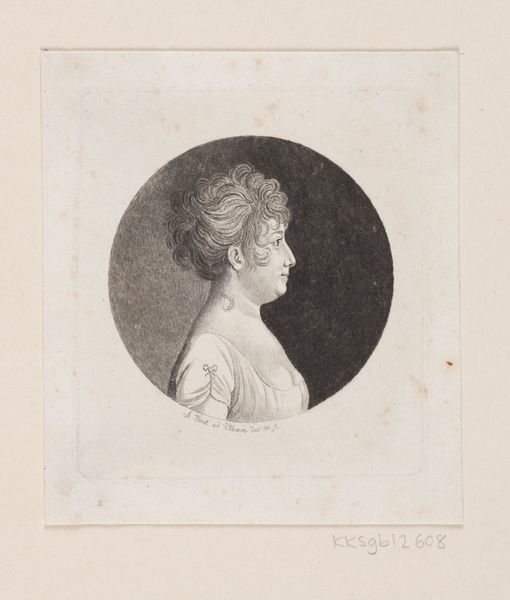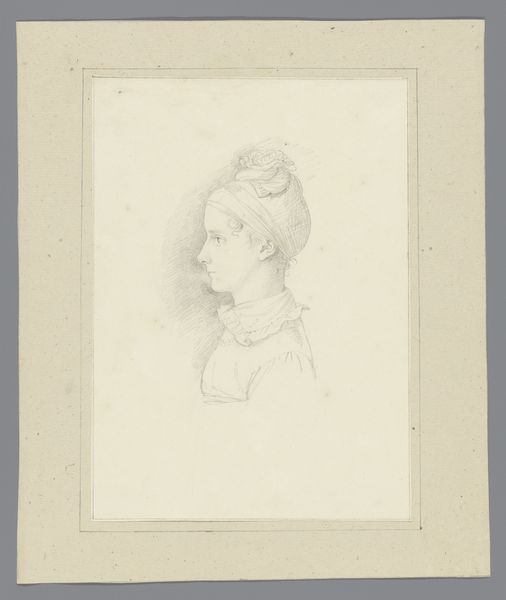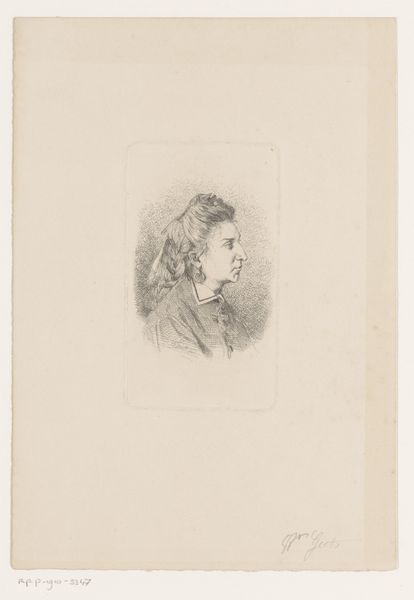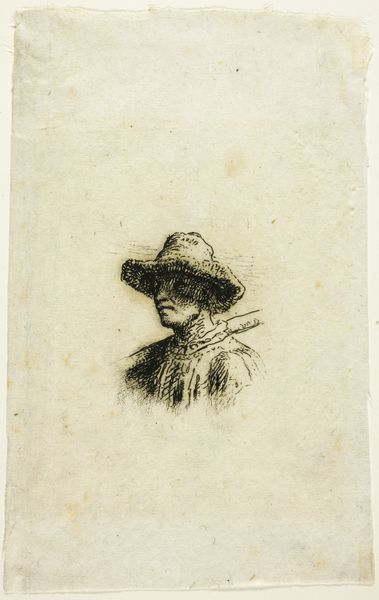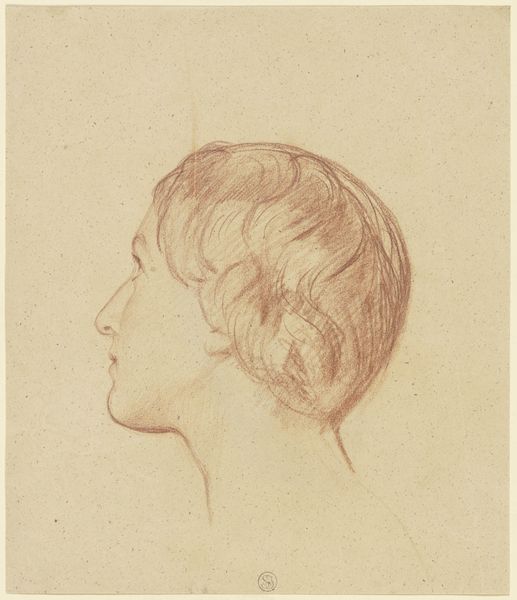
#
imaginative character sketch
#
light pencil work
#
pencil sketch
#
personal sketchbook
#
idea generation sketch
#
sketchwork
#
ink drawing experimentation
#
pen-ink sketch
#
sketchbook drawing
#
pencil work
Dimensions: height 158 mm, width 143 mm
Copyright: Rijks Museum: Open Domain
Editor: So, here we have "Portret van een jonge vrouw," or "Portrait of a Young Woman" by Philip Zilcken, made sometime between 1890 and 1913. It’s a pencil sketch, and I’m struck by how delicate and almost dreamlike it feels. What resonates with you when you look at this piece? Curator: It's interesting that you pick up on that dreamlike quality. I see this less as a portrait of a specific individual and more as an archetype. The young woman's gaze isn't directed at us; she's looking inwards, perhaps contemplating something just beyond our perception. It reminds me of depictions of muses or even figures in pre-Raphaelite paintings, who embodied specific virtues or ideas. Editor: That’s interesting. So, it’s not really about *her*, but what she represents? Curator: Exactly. Notice how the sketch lines are quite soft and undefined. Zilcken isn't giving us concrete details about her physical appearance; rather, he's using visual symbols – her downcast eyes, the simple adornment around her neck – to evoke a certain mood, a feeling of introspective innocence. In many ways the vagueness allows more to be represented. Does that shift how you perceive it at all? Editor: It does! It makes me think about how artists use symbols to create meaning. Like, is that adornment around her neck a symbol of restraint or simplicity? Curator: It could be either, or perhaps both. Think about the cultural context. What might a neck adornment signify in that era? Was it a common piece of jewellery? Does the looseness of its presence signify something about the sitter? The ambiguity is intentional; Zilcken is inviting us to project our own interpretations onto the image, drawing from our own cultural memory and understanding of these visual cues. Editor: I see what you mean. I had only considered my initial, gut reaction but now it seems like Zilcken’s piece prompts deeper reflection on how symbols speak to us across time. Curator: Precisely, and in a way, keeps the conversation alive.
Comments
No comments
Be the first to comment and join the conversation on the ultimate creative platform.
